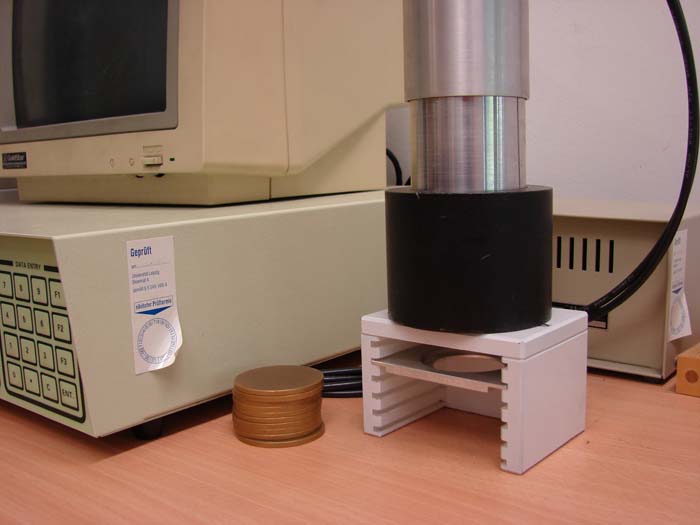ISO 9699 Low-Level Alpha and Beta Counting for Environmental Samples
The ISO 9699 standard provides a robust framework for conducting low-level alpha and beta counting of environmental samples. This method is crucial in ensuring compliance with international standards and regulations related to the detection, quantification, and reporting of radioactive materials in various environmental matrices.
Alpha and beta particles are emitted by certain unstable isotopes found in natural and artificial environments. These emissions can pose health risks if not properly managed. The ISO 9699 standard ensures accurate measurement techniques that help mitigate these risks effectively.
The test procedure involves several critical steps, including sample preparation, choice of appropriate counting equipment, calibration processes, and data interpretation. Sample preparation typically includes drying, homogenization, and the use of appropriate filters or sieves to ensure representative sampling.
Counting devices such as scintillation detectors are commonly used for their high sensitivity in detecting low-level emissions. The standard specifies detailed guidelines on how these instruments should be calibrated before testing begins. Calibration ensures that measurements accurately reflect actual radiation levels within the sample.
Data interpretation plays a vital role in this process, requiring skilled analysts who can discern meaningful information from raw count data. Reporting must adhere strictly to ISO 9699 requirements, which emphasize precision and clarity in conveying results. Compliance with these standards helps laboratories maintain credibility while ensuring they meet regulatory expectations globally.
Understanding the nuances of this standard is essential for professionals involved in environmental monitoring, waste management, and nuclear safety programs. By adhering to ISO 9699, organizations demonstrate their commitment to maintaining high-quality practices that protect both personnel and public health.
Scope and Methodology
The scope of ISO 9699 encompasses the measurement of low-level alpha and beta particles in environmental samples. This includes soil, water, sediment, air particulates, and other relevant materials that may contain radioactive isotopes.
- Sample Preparation: Ensures uniformity across all samples to minimize variability in counting results.
- Instrument Calibration: Critical for accurate measurement of low-level emissions. Instruments must be regularly recalibrated using certified standards.
- Data Analysis: Requires rigorous statistical methods to interpret counts correctly and report findings accurately.
The methodology described in ISO 9699 specifies detailed procedures for each step, from initial sample collection through final analysis and reporting. These guidelines are designed to ensure consistency and reliability across different testing laboratories worldwide.
By following these standards, laboratories can produce reliable data that contribute significantly to the overall understanding of environmental radiation levels. This information is invaluable in formulating effective policies aimed at protecting human health and the environment from potential hazards associated with radioactive materials.
Industry Applications
The application of ISO 9699 extends beyond theoretical research into practical applications across multiple industries. Here are some key areas where this standard plays an important role:
- Environmental Monitoring: Regularly monitoring soil, water bodies, and air to detect changes in radiation levels.
- Nuclear Waste Management: Ensuring that radioactive waste is safely stored and disposed of without causing harm to the environment or public.
- Bioaccumulation Studies: Investigating how radioactivity accumulates within plants and animals.
- Agriculture: Assessing soil quality before planting crops, especially in regions known for containing higher than normal levels of radiation.
In each of these areas, the ability to accurately measure low-level alpha and beta particles is crucial. ISO 9699 provides a standardized approach that ensures consistent results regardless of where or by whom they are conducted.
Why Choose This Test
- Precision: The precision of measurements made using this standard is unparalleled, making it ideal for detecting even the lowest levels of radiation.
- Regulatory Compliance: Adhering to ISO 9699 ensures that all tests conducted meet international standards and regulatory requirements.
- Reproducibility: Results obtained from different laboratories using this method are highly reproducible, enhancing confidence in the data generated.
- Safety: By accurately identifying and quantifying radioactive materials present in environmental samples, potential health risks can be minimized or eliminated altogether.
- Cost Efficiency: Early detection of issues allows for timely corrective actions, reducing costs associated with prolonged problems downstream.
- Data Integrity: Rigorous adherence to ISO 9699 helps maintain the integrity of data collected over time, providing a reliable historical record for future reference.
These benefits make ISO 9699 an essential tool for anyone involved in environmental monitoring or dealing with radioactive materials. The accuracy and reliability provided by this standard contribute to better decision-making processes across various sectors.





